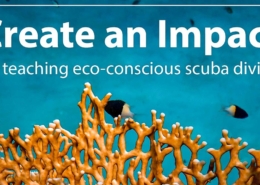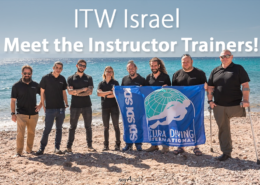Guidelines for Reopening Dive Training
Introduction and Overview
These guidelines are just that; guidelines, and not intended to be a static document. As information, technology, and techniques change, these guidelines should change with them. Resources used in creating these guidelines are located at the end of this document. These guidelines should be regularly checked to ensure current best practice is being used. One comprehensive guide supported by International Training is the DAN Europe COVID-19 And Diving Operations.
General Recommendations
Training should be conducted outside and in well-ventilated areas whenever possible. When outside training options are not available, physical distancing protocols should be followed. Personal Protective Equipment (PPE) should be worn in all situations. When training outside and PPE (masks) cannot be used, consider wind direction. Instructors and students should be positioned in a way such that exhalations blow away from all participants. Be aware of people in close proximity that are not part of the activity but could be downwind.
There is some data to support that chlorinated or bromine pools can kill a virus. However the air directly surrounding the pool will not kill a virus present in one’s exhalation, so physical distancing protocols should be adhered to.. There is also data that suggests the virus can stay active for days in fresh water. Data on the effects in salt water is currently unknown.
The Dive Center
The following tips can help protect you and your customers before doing business together. Establish your business as ‘By Appointment Only’ and in compliance with local regulations.
Tell your customers how they can engage with your business, including:
- How to contact you
- Hours of operation
- Services offered
Here are some ways to get the word out:
- Post on your social media
- Leave instructions on your phone answering system
- Post on your website
- Place a sign on the door of your business
Following these recommendations allows your customers and your staff to keep safe distances and provide personalized customer service. As of the writing of these guidelines, data suggests that people who have recovered from COVID-19 can spread viral particles for as long as 40 days after recovery. Therefore, even people who appear to be healthy should be treated as if they are infected.
You should also advertise your disinfecting and safety procedures; this lets your customers and staff know you are prioritizing their health and safety.
Here are some recommendations on what to do and what to advertise:
- Clean high-touch areas after every use: payment system, counters, door handles, handrails, etc.
- Disinfect display equipment according to CDC and manufacturer recommendations after every use.
- Have your staff take the Airborne Pathogens online course and place the certificates where customers can see them
- Clean and disinfect the general workspace every hour
- Require staff to wear masks and encourage customers to as well
- Install plexiglass at your point of sale station to create a barrier between the staff and customers.
- Use floor markers to indicate where customers should stand in order to maintain adequate distance from each other.
Medically Screening Students and Continuous Monitoring
Even after the diver has provided their initial medical and COVID-19 questionnaire (Health Declaration Form / COVID-19), they should be asked at every session if their health has changed, if they have tested positive for COVID-19, or if they have come in close contact with someone whom has or could have COVID-19. This should be strictly followed for your health and the health of your students.
There is an ever-growing list of recommendations for people returning to diving after being infected by COVID-19. This list can be found below.
Equipment Preparation and Use
All equipment should be properly disinfected between uses in accordance with established procedures and manufacturer’s recommendations.
Equipment requiring cleaning and disinfecting includes:
- Display equipment tried on or touched by customers
- Inside and outside of equipment (BCD, Rebreathers, manakins, and disposable lungs should not be reused between participants)
A good practice would be to have students conduct the disinfecting under supervision. This reassures the customer it was done correctly and teaches the students proper procedures for the future.
WRSTC https://wrstc.com/avoiding-disease-transmission-in-diver-training/
Remote Learning – Minimizing Contact
Remote or distance learning should be used to minimize contact while training students. This can be accomplished by using eLearning courses or scheduling video calls with students.
Skills
When training in person, class ratios should be reduced to allow for social distancing. This means students should be seated with plenty of space between them unless they cohabitate. Classrooms should be properly disinfected promptly after use. This also means that wherever possible during practical skills, distance should be maintained, proper PPE worn, and no equipment that has been on or touched by one student should be transferred to another without properly disinfecting it.
Some examples of how to safely accomplish certain skills are below:
Air sharing:
On air share exercises, the donor donates his long hose/alternate/deco reg (as usual) and the recipient simulates breathing on the donated reg by holding it in his hand at the same time removing his own 2nd stage, replacing it (or his backup reg) in his mouth, purging it, and continuing to breath.
Blow, Tap, Talk & Rescue breaths:
Using a manikin and following proper disinfecting procedures, simulate these skills in a dry setting. If you have access to a manikin that can be used in water, make sure the manikin simulates the buoyancy characteristics of a diver.
Mouth-to-mouth:
This is a lifesaving skill that must be taught, but in today’s climate, must be taught with extra precaution. It is important for lay rescuers to perform this skill on both adult and infant manikins, and experience the volume difference required to properly inflate the lungs. This is where we need to change disinfecting procedures; wiping around the manikin mouth with an alcohol wipe will no longer be enough. With COVID-19 being aerosolized through breathing, this means the manikin lungs must be replaced and disposed of properly between users. When removing the lungs, use gloves, remove gloves properly, dispose of gloves and lungs, and wash hands immediately.
Rescue tow/push:
This exercise requires that the “rescuer” get within the recommended 2M / 6FT distance. Because this exercise does not require rescue breathes (conscious and responsive, simulated victim) there are a few methods to mitigate the distance and minimize exposure:
- Have the simulated victim keep their mask on their face and regulator in their mouth
- Have the rescuer keep their mask on and regulator in mouth as much as possible
- Have the rescuer hook a short line (examples – reef hook, Jon line, buddy line) to the victims BC, harness, or around the cylinder valve
References
Divers Alert Network Europe www.daneurope.org/home
Divers Alert Network www.diversalertnetwork.org/
WRSTC https://wrstc.com/avoiding-disease-transmission-in-diver-training/World Health Organization www.who.int/
Center for Disease Control www.cdc.gov/
Environmental Protection Agency https://www.epa.gov/pesticide-registration/list-n-disinfectants-use-against-sars-cov-2
Belgian Society for Diving and Hyperbaric Medicine (SBMHS-BVOOG) on Diving after COVID-19 pulmonary infection https://www.diverescueintl.com/wp-content/uploads/2020/04/PositionCOVID_DIVING.pdf










Skriv en kommentar
Vil du deltage i diskussionen ?Du er velkommen til at bidrage !